Over the 71-year history of Miss Universe, this marks the very first participation of a plus-sized contestant. The 22-year-old Miss Nepal has etched her name in history by confidently showcasing her stunning physique. While many people rallied behind her, praising her beauty, a significant portion of the global audience also levied criticism. She candidly addressed these comments, shedding light on her experiences.
She glowed with confidence.

Moises Castillo/Associated Press/East News
Jane Dipika Garrett expressed her pleasant surprise at the extent of her progress in the competition that took place in November 2023. Having harbored dreams of becoming a model, she confronted past struggles with low self-esteem. The overwhelmingly positive response she received during the competition served as a validating experience, and solidified her newfound confidence in embracing her own identity.
© international_poll / Instagram
Garrett noted that she “did not expect to get that much applause on the stage.” She went on to explain that she “wasn’t expecting anything” and was only participating to represent her country and “to represent women all over the world.”
Opinions were divided.

Despite being praised by many around the world for her gorgeous looks, the 22-year-old said that she had also faced harsh criticism from many people. She admitted that some incoming messages were less than positive, reaching the point of being described as “cruel.”
Jane revealed, “I see things like, ’Oh, she’s a whale,’ or ’Why don’t you go to the gym?’ And things like that.” She continued, “It’s like they don’t even know my story. They don’t even know what I’m going through.”
She’s not letting her struggles stop her dreams.

© Miss Universe / YouTube, MARVIN RECINOS/AFP/East News
The beauty contestant clarified that she grapples with a condition known as polycystic ovarian syndrome (PCOS). This medical condition involves the overproduction of androgens by the ovaries, surpassing the typical levels found in women. PCOS manifests with various effects, including weight gain, menstrual irregularities, acne, and excess hair growth.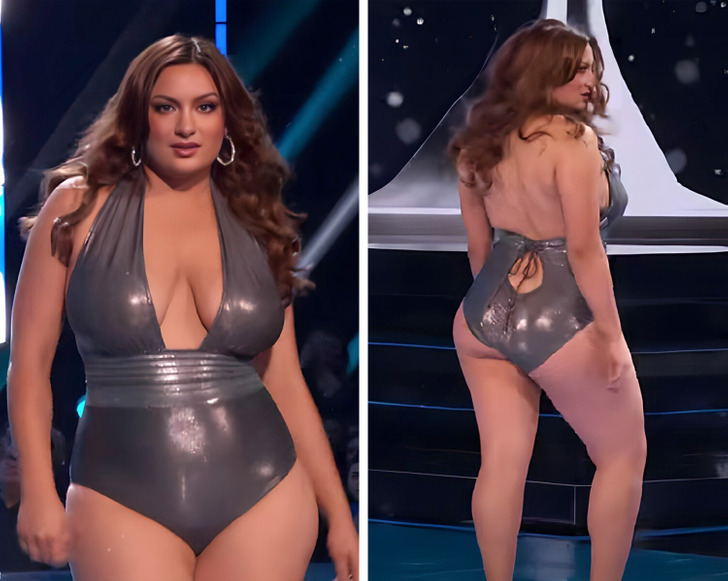
© Miss Universe / YouTube, © Miss Universe / YouTube
She noted that recently she had gained a lot of weight due to her condition, stating, ’’that’s also really taken a toll on my mental health and my self-esteem because I thought that I wasn’t good enough or that I wasn’t beautiful enough.’’
Nevertheless, Garrett underwent a journey of cultivating a positive mindset and finding comfort in her own skin. Observing her radiant confidence on stage, it’s evident that she has successfully achieved this self-acceptance journey.
We concur that Miss Nepal looks absolutely stunning, and we consider it a significant stride for the Miss Universe competition to embrace and celebrate the beauty and diversity of women’s bodies in all shapes and sizes. To delve further into the realm of Miss Universe and discover how previous winners are looking today, we invite you to explore this article.
Dad Told Me to Take Cold Showers with the Soap He Gave Me — When My Boyfriend Walked into My Bathroom, He Started Crying

When Amelia’s father gave her a soap bar and told her to take cold showers with it, she never thought he had an evil, hidden agenda behind it. Her world turned upside down when her boyfriend told her the horrifying truth about that soap.
I’ve always been Daddy’s little girl, but now I feel like throwing up when I say those words. I’m not his little girl, and he’s not the man I always thought he was. Let me tell you why.
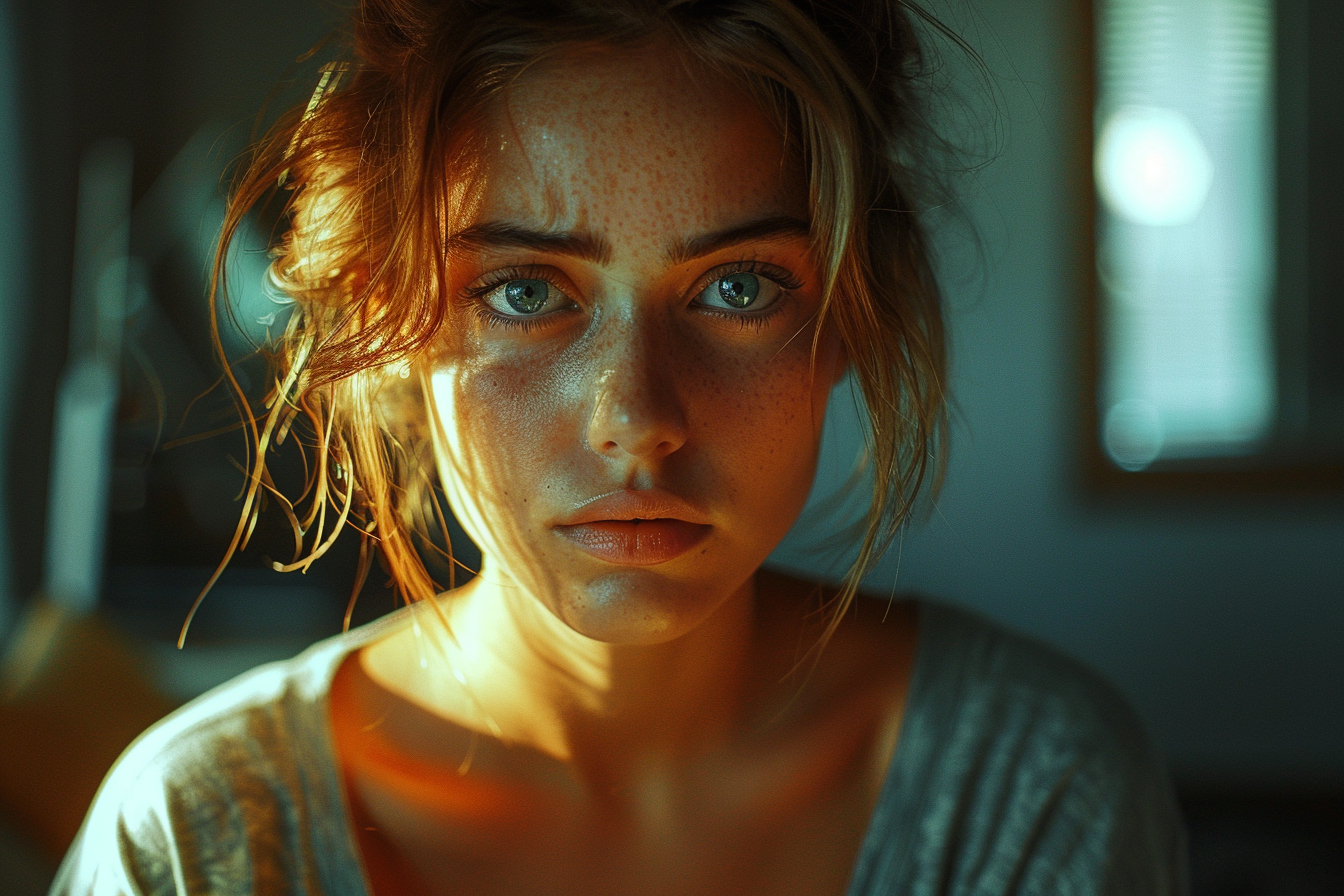
A woman looking straight ahead | Source: Midjourney
So, I’ve always been close to my father, like REALLY close. I’m 23, and I lived with my parents up until a month ago because Dad never wanted me to move away.
He had given me the second floor of the house where I had my bedroom and a bathroom. Those two rooms of the house solely belonged to me. They were my safe space until the day Dad began to complain.

A man standing near a door | Source: Midjourney
My father is one of those people with a personality resembling a coconut. You know, hard on the outside and soft on the inside. He has these strict rules and principles that he abides by, but he also has this empathy inside that makes him the best Dad ever.
“Character is built in discomfort,” he’d always tell me. “You gotta face the worst now if you want a life full of luxuries ahead.”
But he’d also buy me chocolates and ice cream on days I didn’t feel good.

A woman holding an ice cream cone | Source: Pexels
Meanwhile, my mother has always been the typical loving mom. She’s always ready for hugs and kisses and never says no whenever I ask her to cook my favorite pasta. She has always been a sweetheart.
However, I recently felt that my parents were not the same anymore. Over the past few months, they had grown cold, and the love and care had suddenly vanished.

A woman sitting in her living room | Source: Midjourney
Honestly, I sometimes felt like I was living with two strangers in the house. It felt like we had lost the connection we always had.
Then began the unnecessary complaints and nitpicking from Dad’s side.
“You and your friends were too loud last night!”
“You’re staying out too late, Amy.”
“You’re spending too much on unnecessary things!”
Then came the complaint that really snatched my self-confidence.

A woman looking straight ahead | Source: Midjourney
“You smell horrible, go take a cold shower and use the soap I gave you!”
I smell horrible? What? I thought. Where did that come from?
That was the day when Dad handed me this soap I had never seen before. It was a green, chunky soap bar that smelled a bit weird, but Dad had asked me to use it, assuring it would help get rid of the unpleasant body odor.
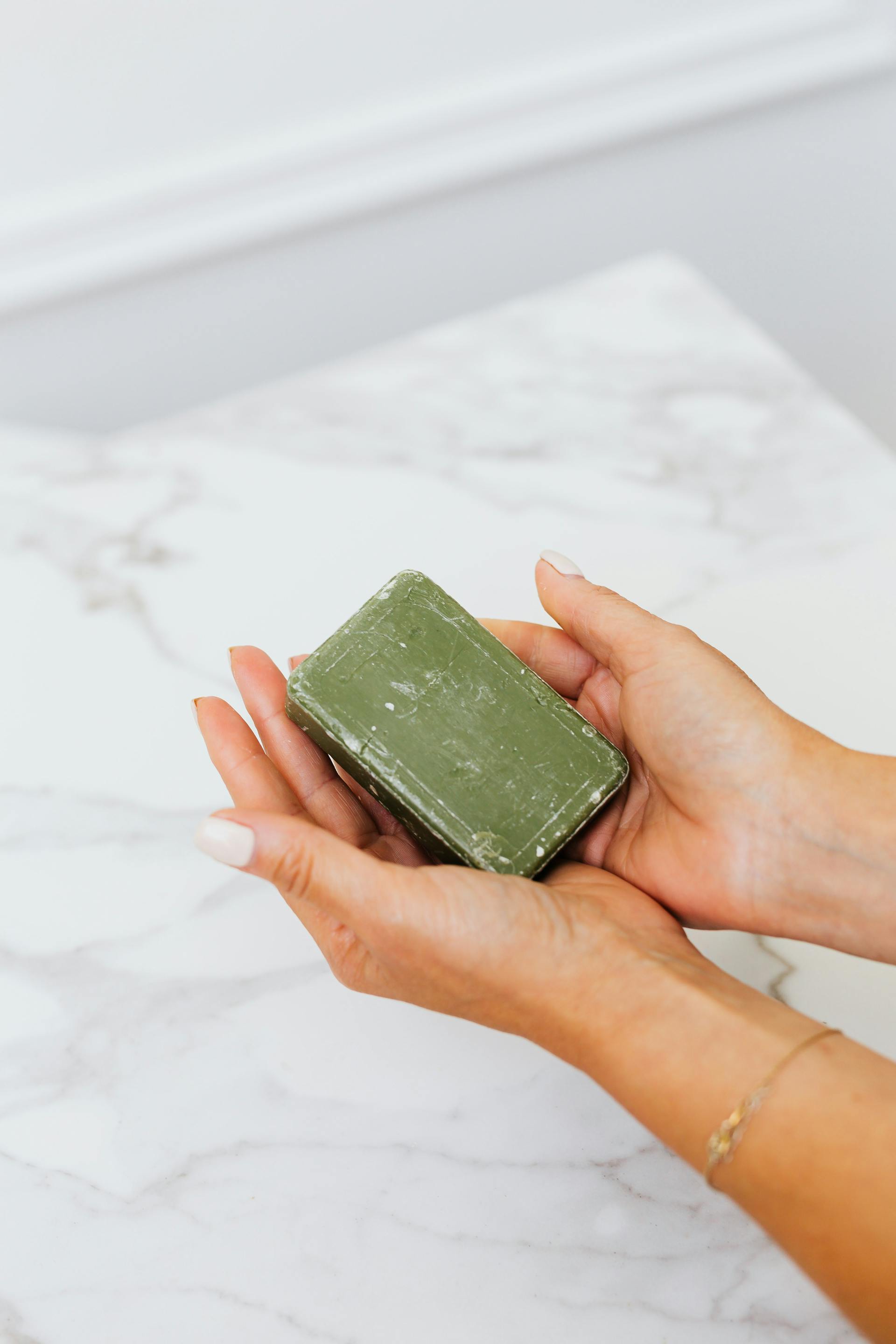
A woman holding a soap bar | Source: Pexels
His words made me feel so self-conscious that I had even stopped hanging out with my boyfriend, Henry.
I often found myself smelling my skin, clothes, hair, and even my breath, just to check what made my father feel so uncomfortable around me.
I followed his advice and used that soap whenever I took a shower. Or, if I may put it correctly, I took five showers a day just to use that soap and get rid of the smell that had apparently been haunting my father.

A woman taking a shower | Source: Pexels
I scrubbed my skin so hard that I stripped it of the moisture it needed. My skin had begun to look dry, scaly, and so rough.
Even then, my father said I still smelled like rotten onions.
“Did you use that soap, Amy? I don’t think you did,” he’d say. “You smell so bad.”
What shocked me even more was that my mother didn’t say a word when Dad humiliated me like that every day. She didn’t say anything in my defense or stop me from being so hard on myself.

A woman sitting on a chair, looking down | Source: Pexels
Mom and I had always been close. She was the only person I shared everything with since I was a kid. I’d always tell her about my latest crush, my new boyfriend, and even the new slang I’d learned at school.
I couldn’t believe it when she stood silently, avoiding my gaze, while Dad kept grilling me. I won’t ever forgive Mom for not being there for me when I needed her the most.

A woman looking down | Source: Pexels
I kept showering with the soap, and my clothes always clung to me because they were damp from the frequent showers.
Besides, I began avoiding my father. I’d always scurry up to my room and lock the door whenever he returned home from work. I didn’t want him to see me. Or, more specifically, smell me.
The turning point came when my boyfriend, Henry, came over. We had been dating for a few months, and he was the one bright spot in my increasingly bleak days.

A woman talking to her boyfriend | Source: Midjourney
Henry has always been the supportive boyfriend, the green flag we all look for. He’s always been kind to me, and he came over that day because he had noticed I had been avoiding him.
“Where have you been, Amy?” he asked as he held me by my arms.
“I was… I was just busy with some stuff, Henry,” I faked a smile. “I’m fine.”
“Really? You don’t look fine, babe,” he said.
“I’m okay, Henry,” I said as I held his hand. “Tell me one thing… Do I smell bad?”
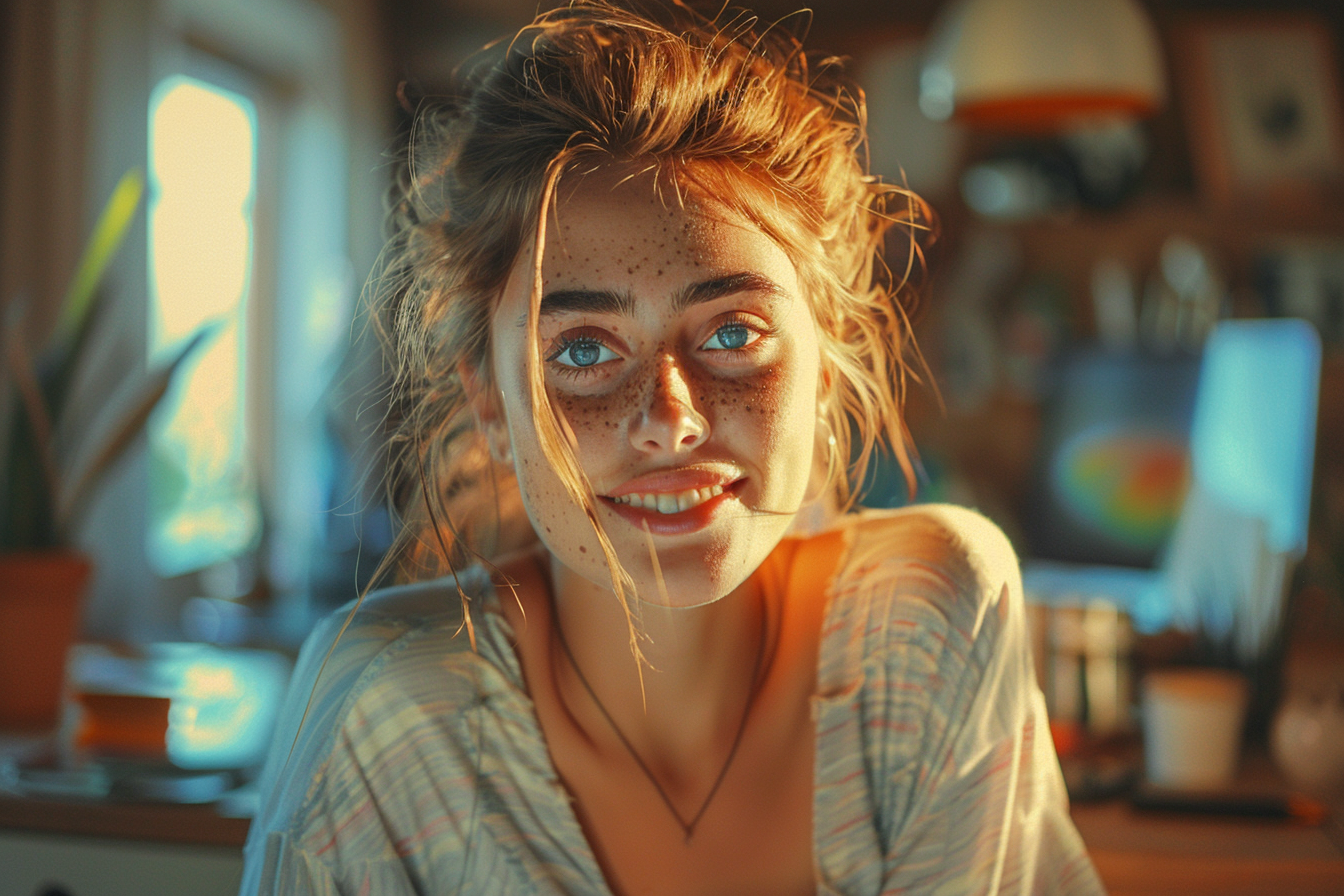
A woman smiling | Source: Midjourney
He laughed, thinking I was kidding.
“No, babe. You smell fine. Why?”
“Nothing. I just…” I mumbled. “Forget it.”
“I’ll be right back,” he said before going to the bathroom.
A few minutes later, I watched him step out of the bathroom with the soap bar in his hand. I could see he wasn’t too happy about it.
“Who gave you this?! Are you taking cold showers with this?!?” he asked with eyes wide open.

A man looking straight ahead | Source: Midjourney
How did he know this? I thought.
“Yeah, my Dad. Why?” I asked, trying my best not to panic.
“They didn’t tell you, did they?! Baby, this isn’t soap! It’s used to strip industrial machinery of grease and grime.”
“Wait, what?” I was shocked.
“This stuff is toxic, Amy. It causes chemical burns.”
I can’t explain how betrayed and heartbroken I felt at that point. How could my father do this to me? To his daughter who he loved so much?
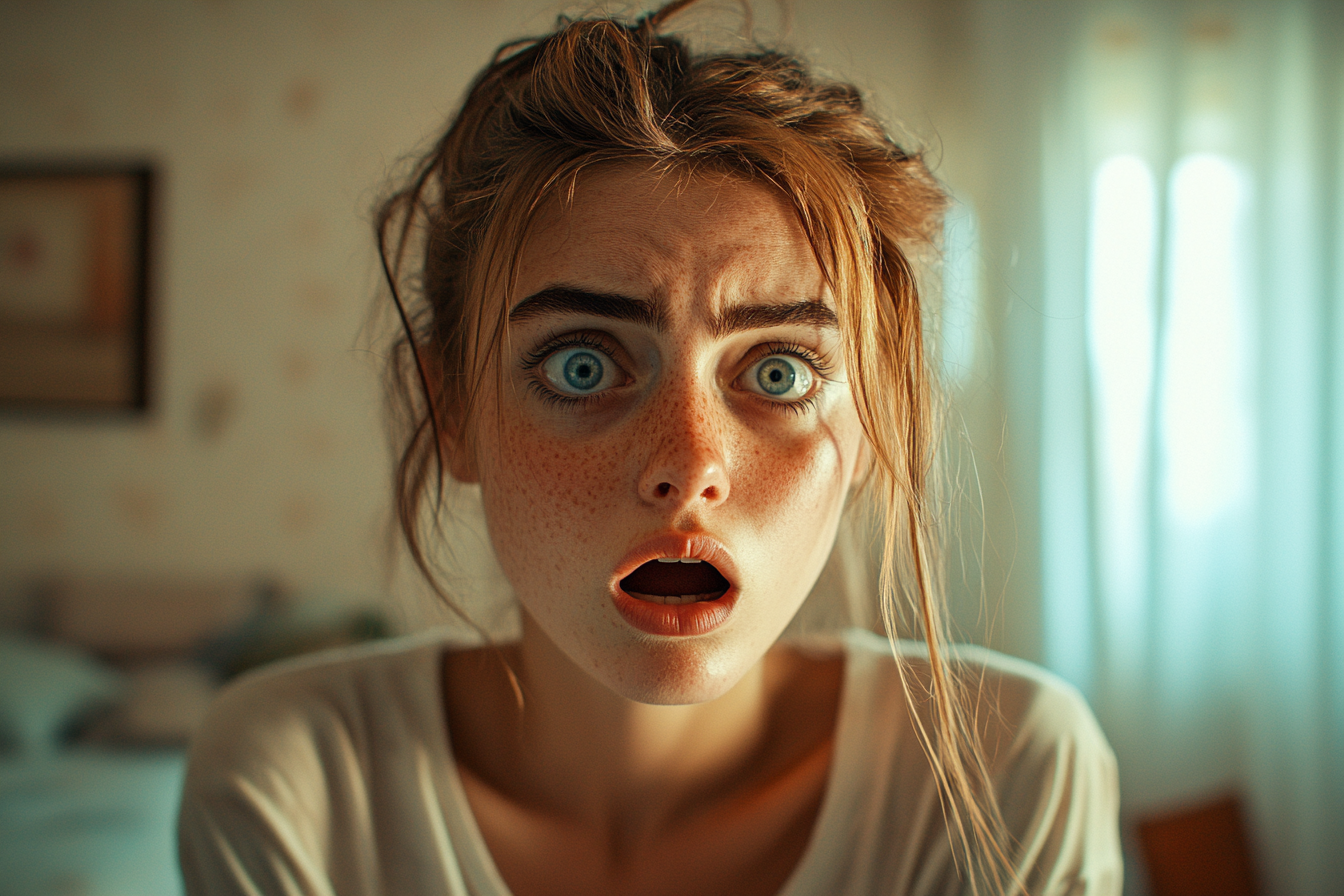
A woman looking straight ahead, shocked | Source: Midjourney
That’s when it all started to make sense to me. The dry, itchy skin and the weird texture of the soap bar. It also made me wonder if my mother knew about this.
“I think we need to go to the hospital to get you checked,” Henry said. “And then, we’re going to the police. This is abuse, Amy.”
I don’t know why, but I stopped him.

A man sitting in his girlfriend’s house | Source: Midjourney
I knew he was telling the truth, but I couldn’t put the words “abuse” and “Dad” together. I had never seen Dad in a negative light, and I didn’t like how those words fit in the same sentence and made so much sense.
In short, I couldn’t accept that my father had tried to hurt me.
“We can’t do that,” I told Henry. “We can’t go to the police.”
“But why?” he asked.
“I’ll explain that later,” I said. “Please just help me get out of here. I’ll confront my parents later.”
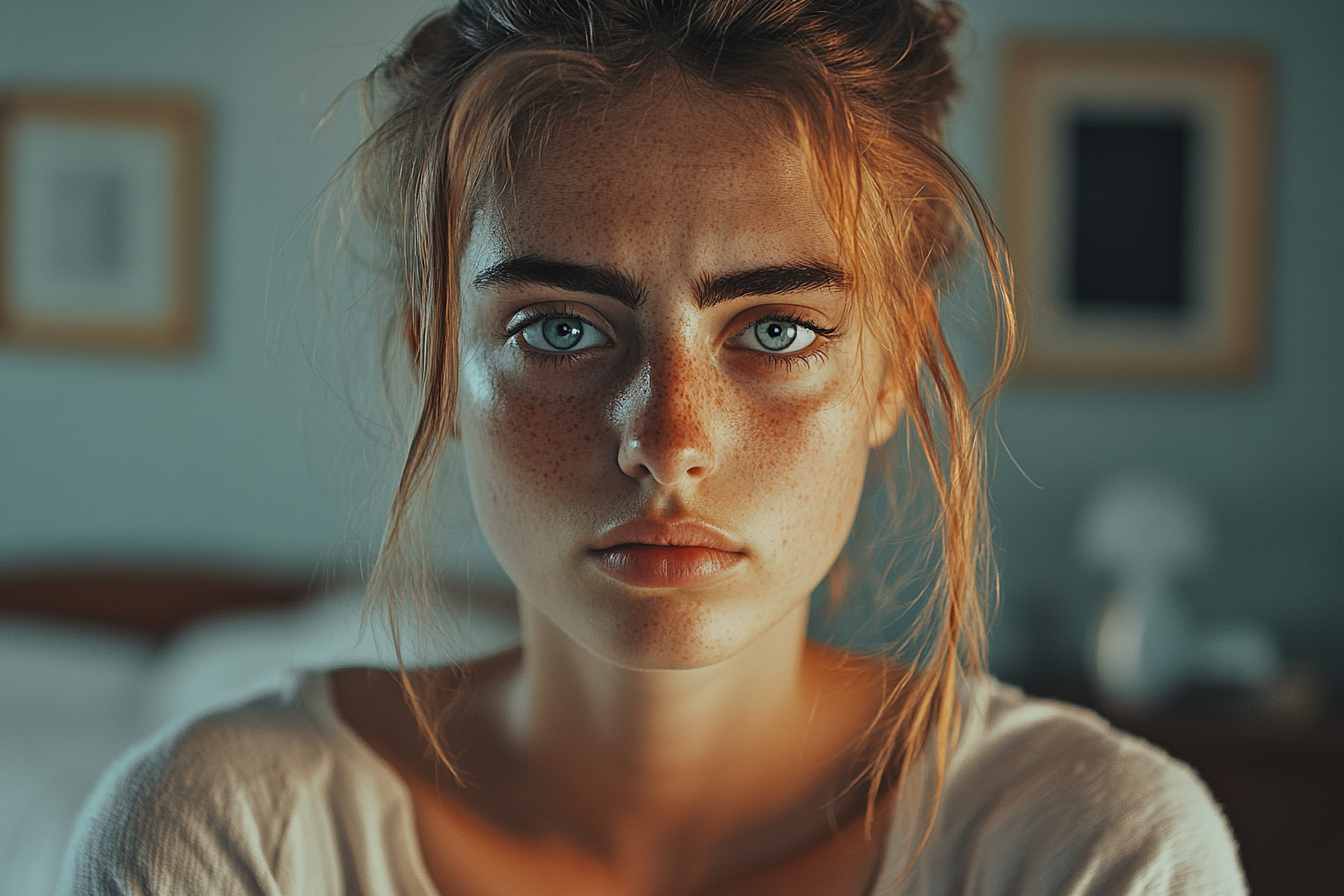
A woman looking straight ahead | Source: Midjourney
He agreed, and we moved into a small apartment a few days later. It was cramped and barely furnished, but it felt like a safe haven compared to what I had endured.
Then, it was time for me to confront my parents. I drove back to their house the next day.
When I arrived, Dad was in his usual spot, watching TV in the living room, and Mom was in the kitchen. I walked in with the soap bar in my hand and stood in front of my dad.

A man holding a remote | Source: Pexels
“I never thought you’d do this to me, Dad,” I said as I held the soap bar high enough for him to see. “This is toxic. It’s poison. It ruined my skin. Why did you do this?”
“Oh, so you finally found what it is, huh?” he smirked. “You needed to learn a lesson.”
“A lesson?” I laughed. “You nearly killed me. For what? Because you thought I smelled bad?”
“Please stop this!” My mother finally intervened. “Amy, yo—”
“You knew, Mom, didn’t you?” I cut her off. “You were a part of this ridiculous plan, right?”
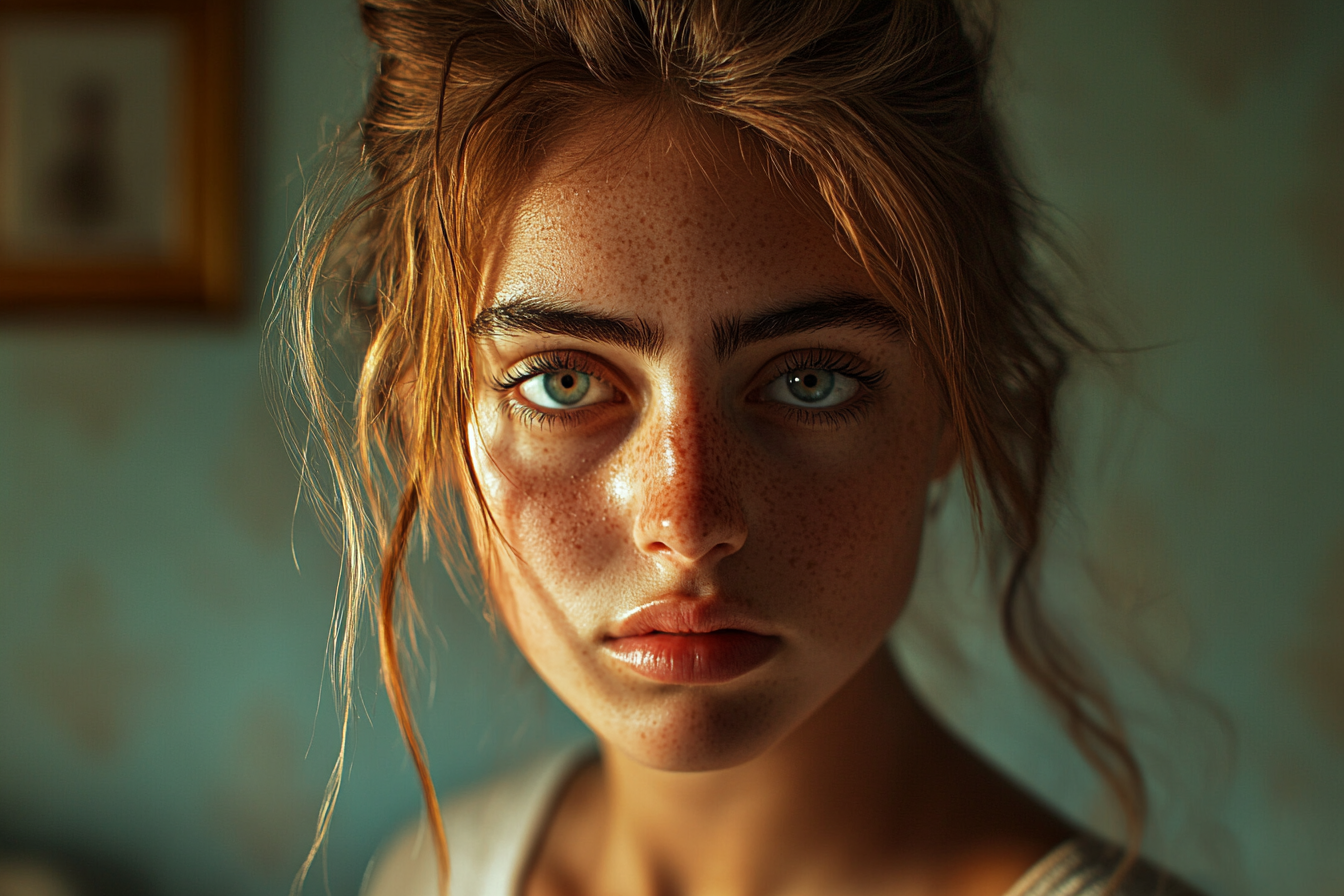
A woman in her parents’ living room | Source: Midjourney
I watched tears trickle down her cheeks, but she didn’t say a word.
“Why did you do this to me, Dad?” I confronted my father. “I need to know!”
I wasn’t ready for his response. I had no idea it would turn my world upside down.
“You want to know why?” he said, almost to himself. “Fine. When your mother and I went on that vacation last year, we had a little too much to drink. We ended up in a crowd, where a fortune teller told me that your mother had been unfaithful.”
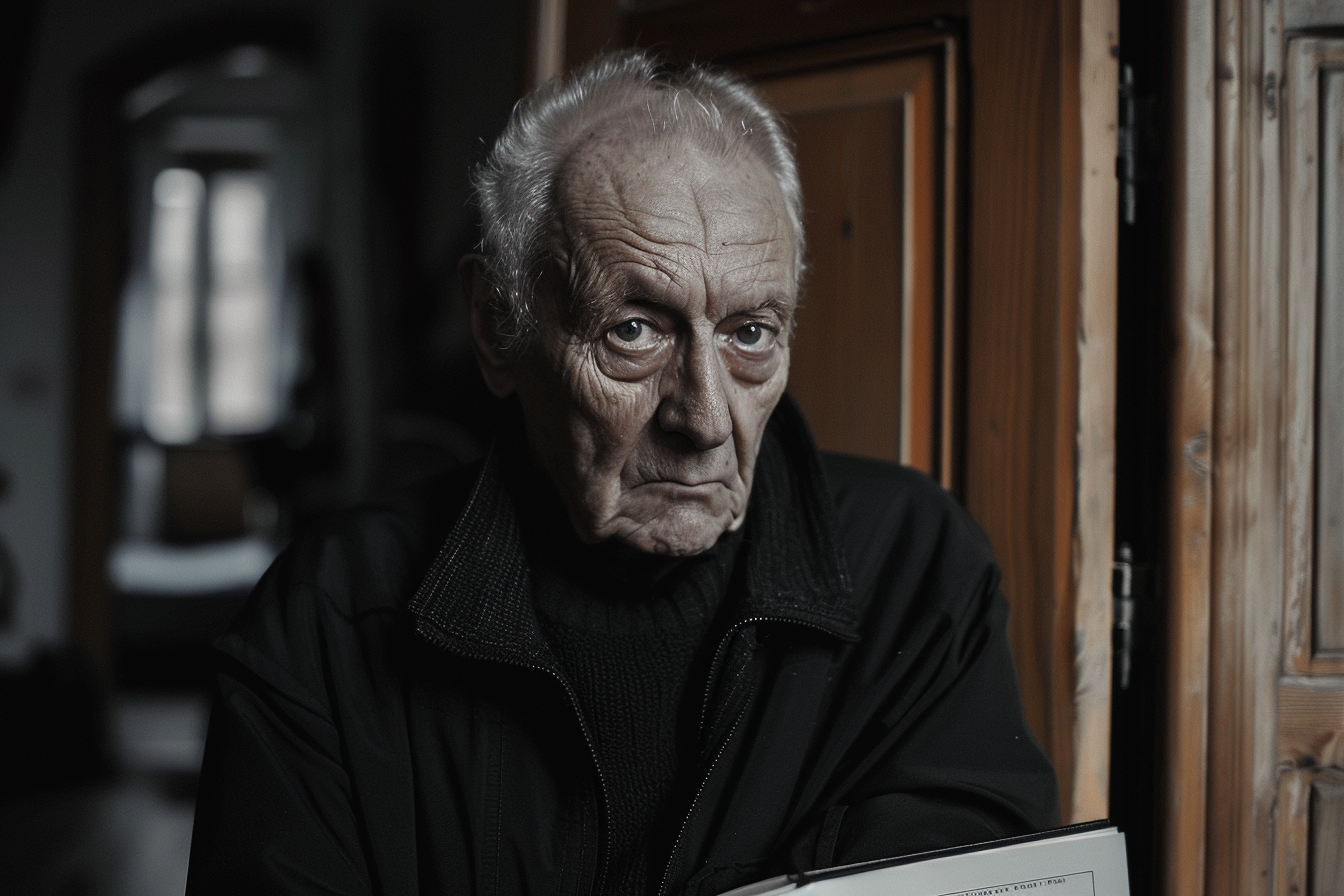
A man looking straight ahead | Source: Midjourney
“What are you talking about?” I asked as my heart flipped.
“That’s true,” he continued. “When I confronted your mother the next morning, she told me the truth. She told me you weren’t mine. You’re the result of an affair she had while I was working hard for us in another country.”
I looked at my mom, who couldn’t meet my gaze. Then, I looked back at Dad as he continued to speak.
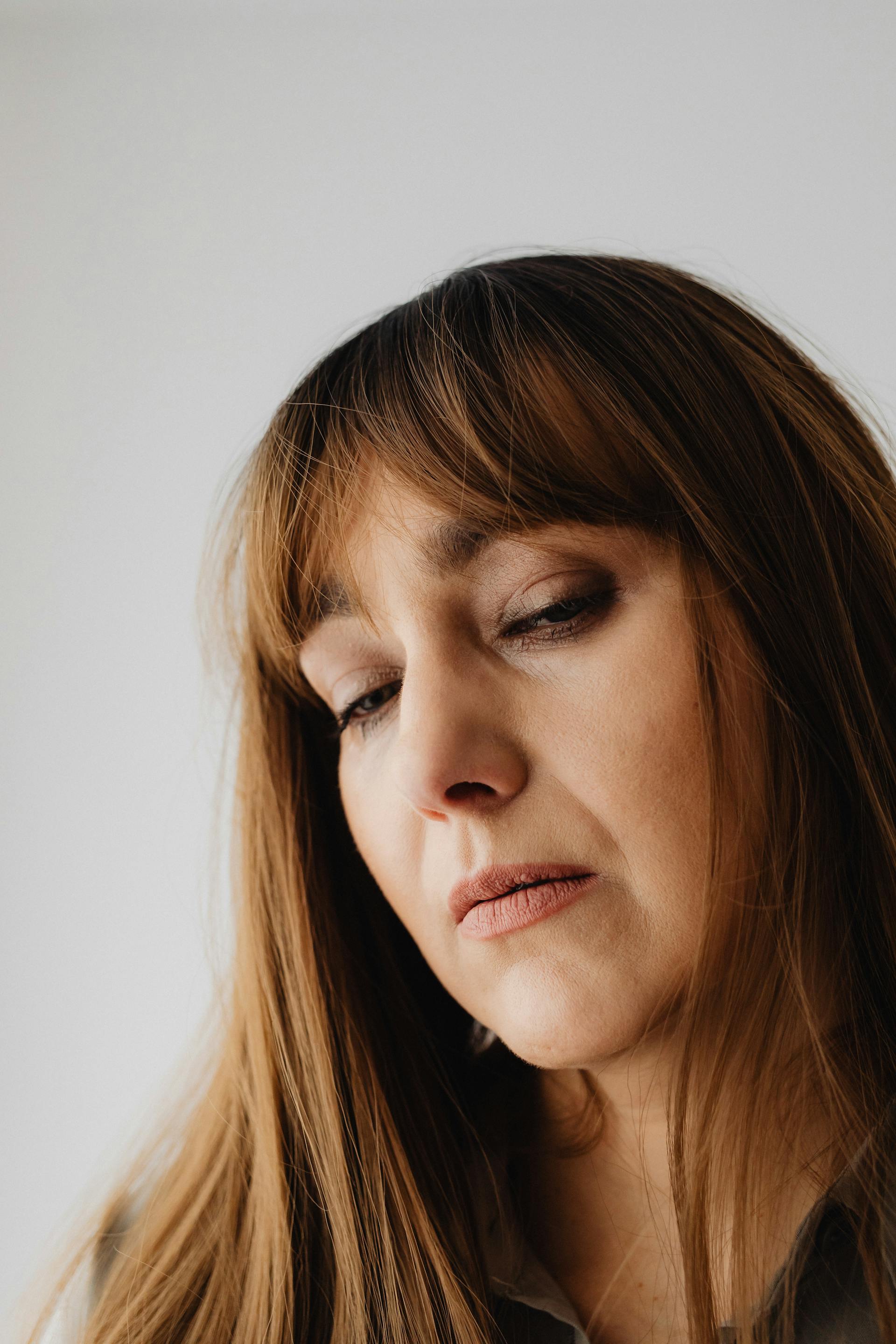
A sad woman looking down | Source: Pexels
“Your mother begged me not to leave her because she didn’t want to break our family apart,” he shook his head. “So, I agreed. But on one condition. I had to make her pay, and you too. Because YOU ARE NOT MY DAUGHTER!”
My heart shattered into a million pieces that day. I couldn’t believe my father had this evil side. The evil personality that was so hungry for unjust revenge.
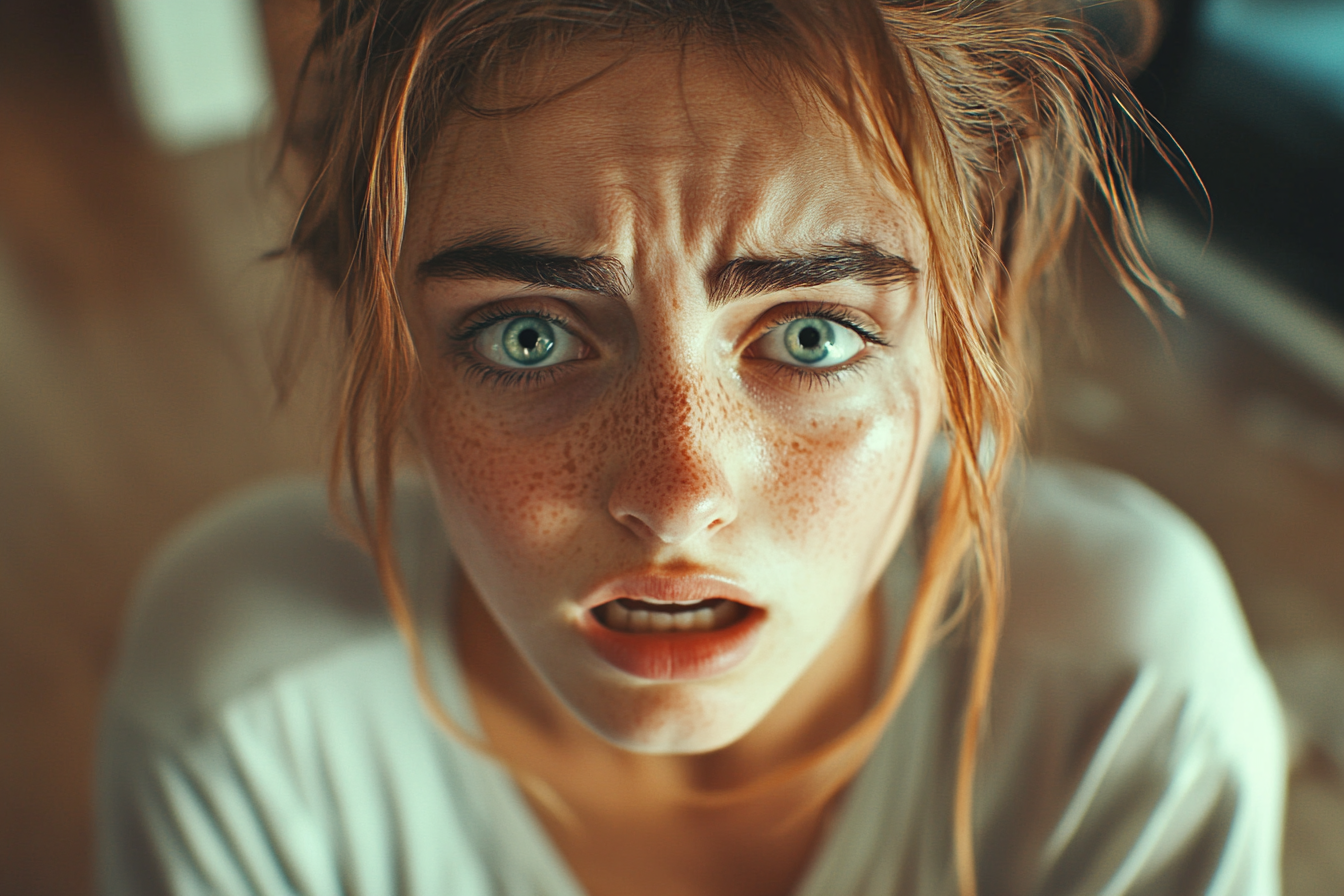
A close-up shot of a woman, shocked | Source: Midjourney
“You mean you gave me that toxic soap because you were angry at Mom? Because you thought I was not your daughter?” I asked as the tears in my eyes blurred my vision.
“You’re not my daughter,” he said and turned around. “You’re not my blood.”
For the next few seconds, I stared at his back in silence, wondering why he punished me for something that wasn’t my fault.
“Alright, I’m done with you,” I said as I wiped away my tears. “You’ll be hearing from my lawyer.”

A woman about to leave her parents’ house | Source: Midjourney
And with that, I stepped out of the house that was once my haven. Over the next few days, I visited the hospital multiple times for my skin treatment and talked to my lawyer regarding how I could file a case against my parents.
Soon, my father received a notice of the restraining order and the impending lawsuit. With that, his smug confidence was shattered, and his reputation was in ruins. His entire circle was disgusted by his actions.

A man reading a legal notice | Source: Midjourney
Meanwhile, Mom tried to get in touch with me, but I didn’t reply to any of her calls or texts. If she couldn’t take a stand for me, why should I even bother talking to her? I was done.
Now, living with Henry, I feel a sense of peace that had been missing from my life for ages. I don’t remember the last time I had laughed this much in my own house. I can’t thank fate enough for blessing me with a man like Henry. I have no idea what I’d do without him.

A man sitting in his apartment | Source: Midjourney
If you enjoyed reading this story, here’s another one you might like: Bobby discovered a hidden stash of expensive gifts in his teenage daughter’s closet, along with a photo of an unknown older man and a note about a café meeting. He discreetly followed her to the café, unaware he’d uncover a secret that would tear his family apart.
This work is inspired by real events and people, but it has been fictionalized for creative purposes. Names, characters, and details have been changed to protect privacy and enhance the narrative. Any resemblance to actual persons, living or dead, or actual events is purely coincidental and not intended by the author.
The author and publisher make no claims to the accuracy of events or the portrayal of characters and are not liable for any misinterpretation. This story is provided “as is,” and any opinions expressed are those of the characters and do not reflect the views of the author or publisher.



Leave a Reply